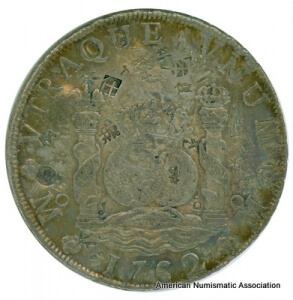Will you be attending the 2014 World’s Fair of Money in Chicago? Here are some pieces that will be featured in the Museum Showcase.
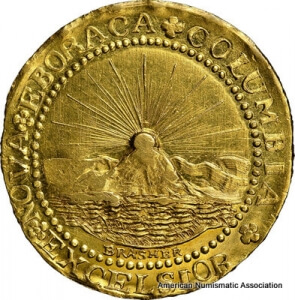
The Brasher Doubloon is part of the “Regulated” series of gold coins that were counter-stamped by American merchants as a guarantee of their value shortly after the end of the American Revolution. The Brasher Doubloon is the first circulating gold coin to be struck in the United States and included elements in its design that would later be incorporated in official American coinage. Its creator, Ephraim Brasher, was a neighbor of George Washington while he lived in Philadelphia.
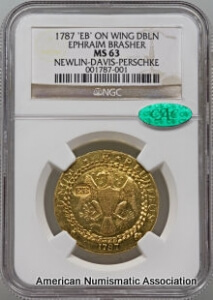
The Brasher Doubloon

Very few matte proof specimens were produced by the U.S. Mint and only 10 examples of this coin are estimated to have survived. In 1921, the United States Mint resumed production of silver dollars for the first time since 1904, using the old Morgan dollar design. This was replaced late in the year, through pressure from the numismatic community, by the new Peace dollar design produced by Anthony De Francisci.
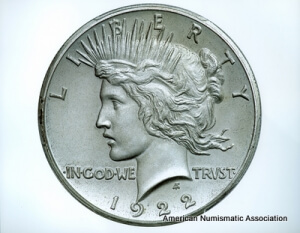
1922 Matte Proof High Relief Peace Dollar
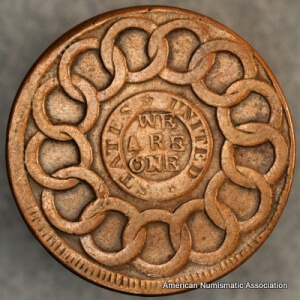
The 1652 Pine Tree Shilling, 1776 Continental Dollar, 1787 Fugio cent and the 1792 half disme all represent “firsts” in American numismatic history. These coins are respectively, the first silver coins to be struck in English North America, the first coins struck for the United Colonies in revolt from Great Britain, the first official coinage of the United State and the first coins struck by the United States Mint. These pieces are part of the ANA collection.

The 1652 Pine Tree Shilling, 1776 Continental Dollar, 1787 Fugio cent and the 1792 half disme all represent “firsts” in American numismatic history.
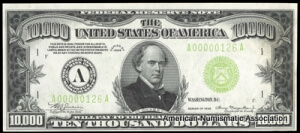
The famous Bebee collection of paper money (part of the ANA Museum collections) is highlighted through a selection of rare, high-denomination Federal Reserve notes in this display. Among the notes featured are the series of 1934 $10,000 and the series of 1914 red seal $100 Federal Reserve notes. See some of the fascinating predecessors of the Federal paper currency we still use today.

The famous Bebee collection of paper money.

The popularity of Mexican pieces of eight led to the emergence of counterfeits. These fake silver coins flooded the markets of the Orient rapidly until the fraud was discovered. Chinese merchants and money changers adopted the practice of testing Mexican coins and marking the genuine ones with small symbols known as chops. The more of these “chopmarks” a piece had the better. Courtesy of the Banco de Mexico.
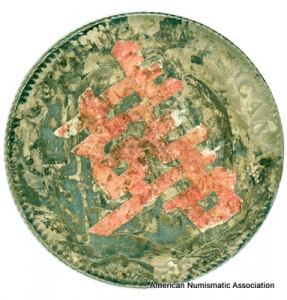
The discovery of the “tornoviaje” or return route across the Pacific Ocean from the Orient to New Spain (Mexico) in 1572 led to the conquest of the Philippines by Spain to serve as the eastern anchor for the trade between Europe, America, China, Japan, the Philippines and Indochina.
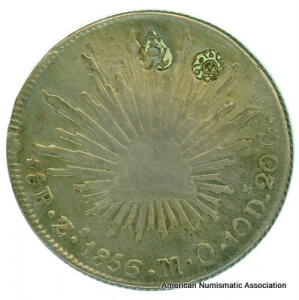
The popularity of Mexican pieces of eight led to the emergence of counterfeits. These fake silver coins flooded the markets of the Orient rapidly until the fraud was discovered. Chinese merchants and money changers adopted the practice of testing Mexican coins and marking the genuine ones with small symbols known as chops. The more of these “chopmarks” a piece had the better. Courtesy of the Banco de Mexico.
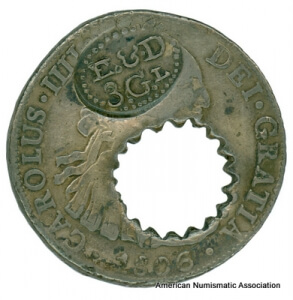
Courtesy of the Banco de Mexico.
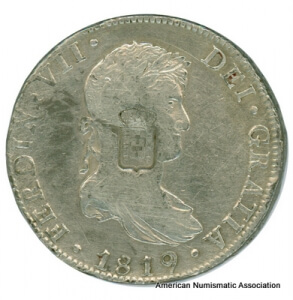
Courtesy of the Banco de Mexico.
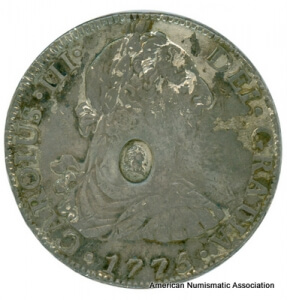
Courtesy of the Banco de Mexico.
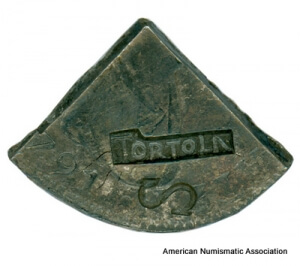
Courtesy of the Banco de Mexico.
